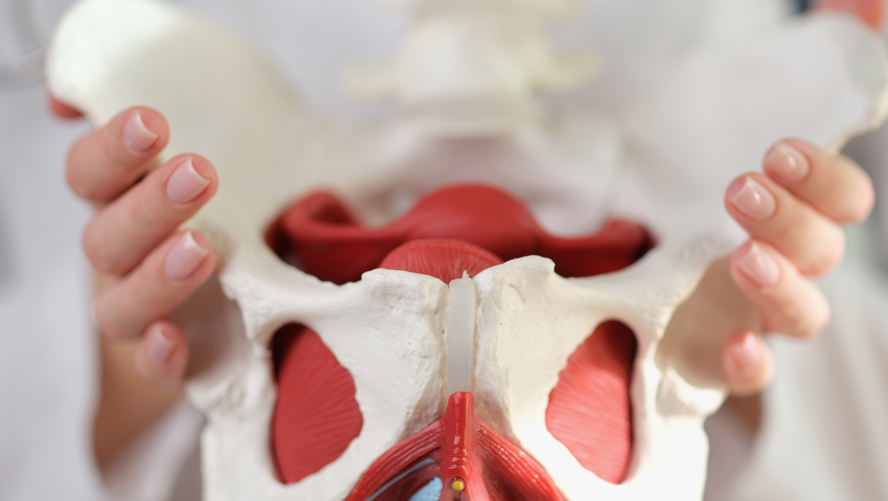
What is Pelvic Floor Rehabilitation and How is it Done?
Pelvic floor rehabilitation is a treatment method used to strengthen the pelvic floor muscles, increase their flexibility and improve their function. These muscles undertake important tasks such as urinary and fecal control, sexual functions and support of the pelvic organs. The rehabilitation process includes special exercises performed by expert physiotherapists, manual therapy techniques and methods such as biofeedback. The treatment is customized to the individual's needs and usually lasts 6-12 weeks, with one or two sessions per week.
What is Pelvic Floor Rehabilitation?
Pelvic floor rehabilitation is a treatment method used to strengthen the pelvic floor muscles and improve their function. Pelvic floor muscles support the pelvic organs such as the bladder, uterus, prostate and rectum, stabilize the pelvis and spine, assist with sexual function and support bowel and bladder control.
Pelvic floor muscles, like other muscles in the body, can be weak, tight, strong or tight. Weakness in the muscles can be a common cause of incontinence, while tightness can lead to pelvic pain. These types of dysfunction in the pelvic floor muscles can be treated with pelvic floor rehabilitation.
Physical therapists specialize in the functions of muscles, joints, and nerves. Some therapists have additional training in pelvic floor muscle health. Your primary care provider may refer you to a pelvic floor physical therapist to address pelvic floor function.
Who is Suitable for Pelvic Floor Rehabilitation?
Pelvic floor rehabilitation is suitable for individuals with various health problems. Especially postpartum women, those with urinary incontinence, those with pelvic pain and those with pelvic organ prolapse can benefit from this treatment. It is also an effective treatment method for individuals with sexual dysfunction and chronic pelvic pain syndrome.
What Health Problems Does Pelvic Floor Rehabilitation Help With?
Pelvic floor rehabilitation can help with the following health issues:
- Urinary incontinence (stress, urge, mixed type)
- Pelvic organ prolapse
- Chronic pelvic pain
- Sexual dysfunctions
- Postpartum pelvic floor problems
- Constipation and bowel control problems
Is Pelvic Floor Rehabilitation Painful?
Pelvic floor rehabilitation is generally painless. However, some exercises and manual therapy techniques may cause mild discomfort. This discomfort is usually short-lived and will decrease as treatment progresses. Since each individual's pain threshold is different, therapists create a personalized treatment plan.
Is Pelvic Floor Rehabilitation Safe?
Yes, pelvic floor rehabilitation is safe. When performed by a qualified physical therapist, the risks are minimal. The techniques and exercises used during treatment are customized to the patient's current condition and needs. However, if there are any health issues or pregnancy, a doctor should be consulted before starting treatment.
What are the Benefits of Pelvic Floor Rehabilitation?
Pelvic floor rehabilitation has many benefits, including:
- Controlling urinary and fecal incontinence
- Reducing pelvic pain
- Improvement of sexual functions
- Prevention and treatment of pelvic organ prolapse
- Accelerating postpartum recovery
- Maintaining and improving overall pelvic health
Do Pelvic Floor Exercises Reduce Pain?
Yes, regular pelvic floor exercises can reduce pain in the pelvic area. These exercises help strengthen and increase the flexibility of the muscles, thus reducing the level of pain. Also, proper breathing techniques and posture corrections are effective in reducing pain.
How is Pelvic Floor Rehabilitation Done?
Pelvic floor rehabilitation is different from other types of physical therapy. The first step is a consultation session with a physical therapist. This session takes place in a private, one-on-one setting. The therapist will review your medical history, symptoms, and goals, and perform a physical exam. This exam may include an evaluation of your hips, spine, pelvic bone, and pelvic floor muscles. Your comfort and confidentiality are paramount throughout the process.
After a consultation, your physical therapist will create a personalized plan to address your pelvic health needs. Sessions may include exercises, stretches, manual therapy, biofeedback therapy, or electrical stimulation to strengthen or relax your pelvic floor muscles. The number of sessions required will vary, and each session is customized to your needs and symptoms.
What are Pelvic Floor Exercises?
Pelvic floor exercises aim to strengthen and increase flexibility of the muscles. Some of the most common exercises include:
- Kegel exercises: Contracting and relaxing the pelvic floor muscles
- Bridge exercise: To strengthen the pelvic muscles and hips
- Squat: To work the pelvic floor and lower body muscles
- Pelvic tilt: To stretch and strengthen the pelvic floor muscles
How Many Sessions Are Required for Pelvic Floor Rehabilitation?
The duration of pelvic floor rehabilitation varies depending on the individual’s condition and response to treatment. Typically, one or two sessions per week are recommended, and the total treatment duration can range from 6-12 weeks. However, in some cases, longer treatment may be required.
Can I Do Pelvic Floor Rehabilitation Myself at Home?
You can do some pelvic floor exercises yourself at home, but it’s important to get guidance from a qualified physiotherapist to get the best results. Your physiotherapist can create a personalized exercise program for you and help you learn the right techniques. Exercises you do at home can enhance the effects of the treatment you receive in the clinic.

